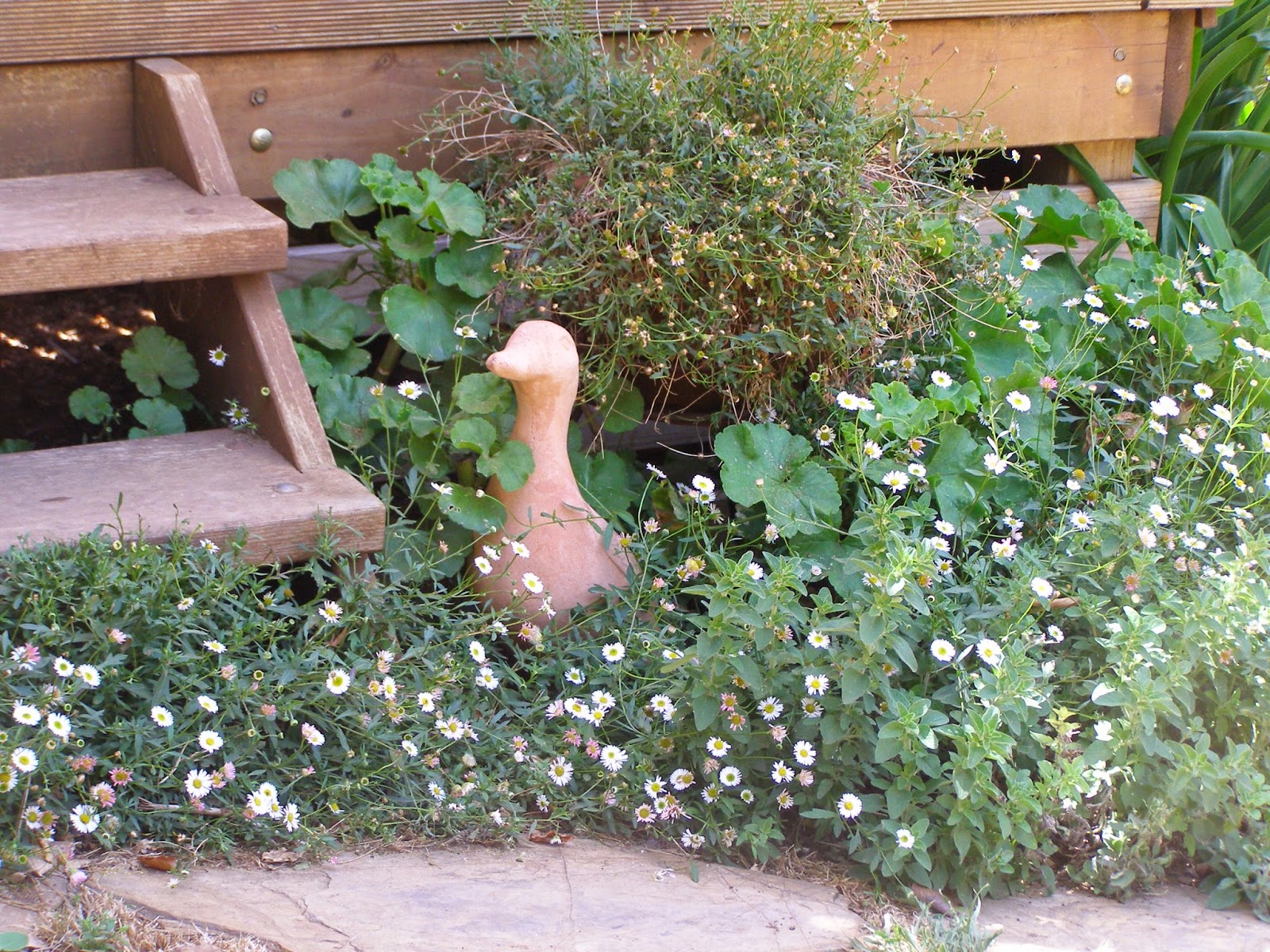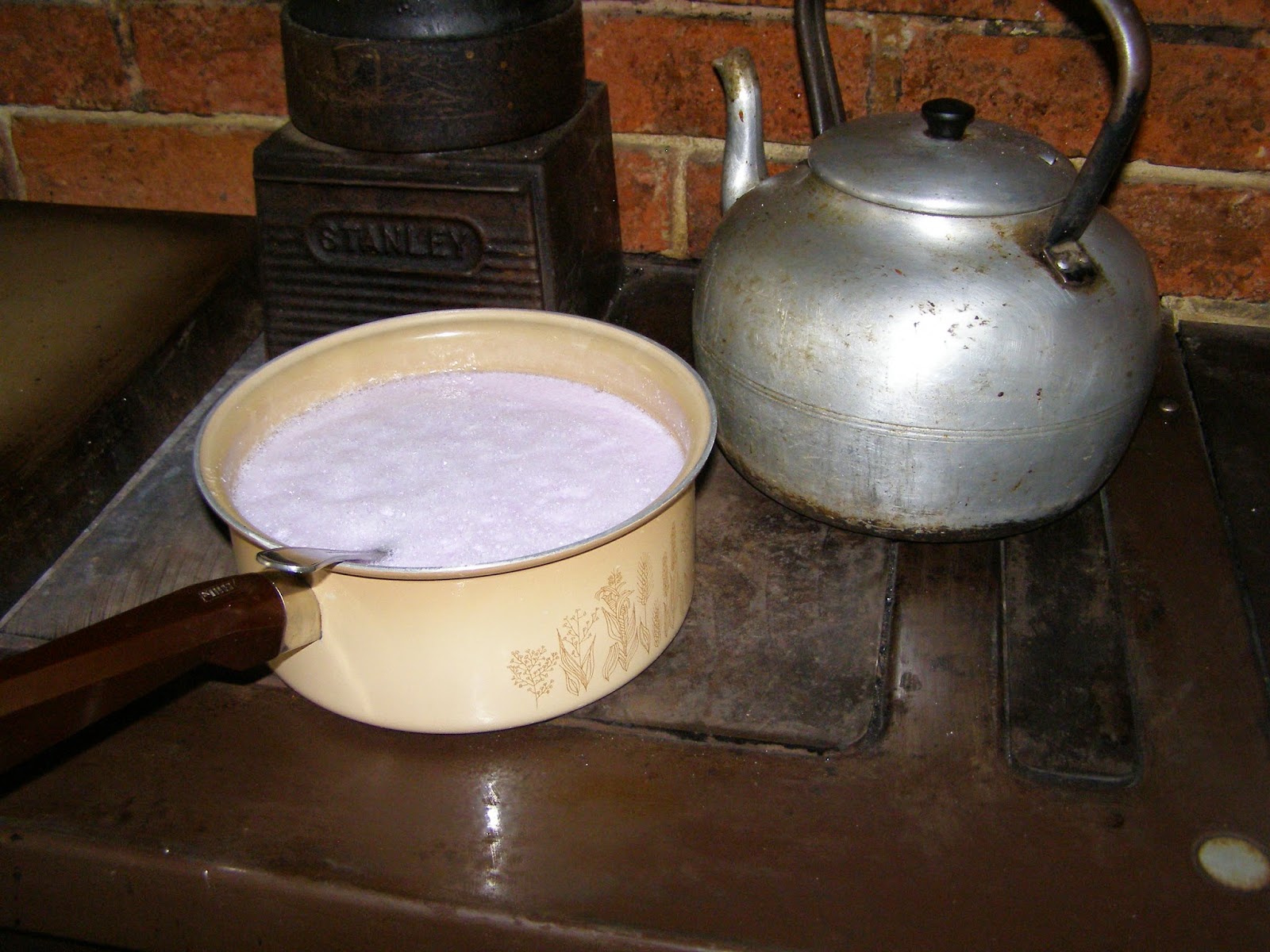Some days everything seems to happen at once.
The butcher phoned a few days ago to confirm that he was coming to our place on Wednesday. We had brought Klaus home last week in preparation, so now it was time to intensify his preparation to ensure a stress free kill.
Brian has built a small "killing" yard, within the small paddock nearest the house, measuring approximately 3metres by 4metres in size. Every day, for the few days preceding the butcher's visit, we feed the chosen steer his favourite food in that yard and lock him in for a few minutes, extending the time of confinement a little each time he goes in. When the butcher is on his way, we have the animal locked in the yard, eating happily and calmly, in readiness for the butcher. Then I drive all the other cows away to another paddock and out of sight of what's happening.
We may be scoffed at by other big farmers but both of us are most comfortable with this method as we believe that meat animals shouldn't witness the killing of another animal.
We also wait until the blood from the butchering is scraped up and any remnant smells have dried up before we let the other cattle return to that paddock. To see the reaction that cows have to blood is enough to convince any skeptics.
We have access to an excellent butcher who travels to us to do the kill. He takes the carcass away to his place where he hangs it for ten days before processing the meat to our requirements and packaging in meal size packs. Then he delivers it to us, ready for putting directly into the freezers and sharing with family and friends.
The meat is tender and tasty. Stress free, organic and grass fed.
I was left with a bucket of offal, liver & heart, which I've divided into three bags and into the freezer for making stew for the dogs. The general rule is not to feed farm dogs uncooked offal from the kill. If parasites are present they will infect the dogs and even though we can never see any parasites in the offal, I always stick to that rule by freezing first and then cooking.
With that done, it was time for a quick bite to eat before driving to Mt Pleasant market.
Before Brian had his hip replacement surgery, we sold all of the sheep we owned. What a sad day it was, because we had built up our little flock over eleven years.
We knew Brian would be totally out of action for more than two months and wouldn't be able to care properly for the sheep if they were fly struck or having trouble lambing. My hands were full, caring for Brian, looking after the cows, chooks and all of the other daily farm chores, plus I don't have the physical strength to tip a sheep on its back for cutting out maggots if that was required.
Fortunately, it was a market that fetched top prices for all of our sheep and the proceeds have been sitting in the bank waiting for our re-stocking program.
Now that he's fully recovered we purchased twenty Merino ewes last month and, with more land at our disposal (as mentioned in my last blog), we needed more sheep.
Our strategy was to find approximately twenty sheep in low condition, preferably ewes, that would be cheap to buy.
Prices were high at yesterday's market, but we sighted a pen of newly weaned lambs that were on the small side and in dirty condition. There were more than twenty, more like fifty, but for the right price we could clean them up, grow them on, return them to the market in six months time at double the value. Let's do it!!
"Don't go over $50", were my instructions to Brian.
Some still had tails attached and we could see a few of them were dirty around the bums, fly struck and maggoty. This is enough to put a lot of buyers off but we knew we could clean them up easily enough and have them looking good in very little time. Sure enough, there was only one bidder against Brian and we got them for $44 each.
I'm amazed, and quite disgusted, that people would put sheep into the sale yards in that condition but it happens frequently. At yesterday's market three pens of sheep were marked with Lice Notices. We never buy sheep that are penned next to a declared lice pen fearing that lice may have jumped onto the sheep in the adjoining pens.
Another thing I've noticed is the growing numbers of wool shedding sheep that are appearing at the market. A considerably higher proportion of these sheep have Lice Notices on their pens.
Small hobby farmers have a liking for these breeds believing they are low maintenance. They think they can turn them out on their land and leave them to keep the grass mowed, no shearing, no crutching, no fly-strike. This may be so, but they are also rarely handled, wormed or treated for lice prevention as conventional sheep are done at shearing time each year. Owners of these sheep breeds really do need to perform routine maintenance on their animals. They are definitely not "set and forget" animals.
The prevalence of lice in the past few years has risen and begs the question... is the lack of maintenance on shedding sheep contributing to this menace?
The PIRSA (Primary Industries & Regions SA) inspector showed us some of the lice he spotted on the sheep in the marked pens. Hardly visible to the naked eye, but so destructive, ruining the wool and causing pain and discomfort to the sheep.
Just a few minutes of looking at your sheep can tell you if they have lice. They will be biting at themselves and rubbing against anything solid; trees or fence posts. Sheep need to be treated for lice prevention each year at shearing time and we use Extinosad which is available at our local farming supplies store. It is the least toxic and has the lowest withholding period of all of the lice preparations on the market.
Sheep lice information on this Victorian site is most informative and I noticed that it's illegal to sell sheep with lice in Victoria. I thought this was the case here in SA, but the sheep I saw yesterday were still sold to the highest bidder. Disappointing!
Three trailer loads later, fifty eight lambs, we worked into the night crutching, dagging, worming, tailing the couple that still had their tails hanging, and put elastrator rings on the two that still had their scrotums intact. Only three had maggots and were crutched and treated.
They were then confined overnight in a yard with access to hay and water before being released onto grass today to avoid sore bellies from sudden ingestion of too much fresh grass.
The sight of the lambs this morning was a joy. They certainly didn't look like the rough mob we brought home yesterday.
Exactly half are wethers (castrated males) and half are ewes (females). The plan is to grow the weathers for another five or six months to sell for meat. The ewes will be grown on and mated up next year when they are roughly eighteen months old.
.JPG)
While all this was happening the hay contractor arrived to cut our few acres of pasture crop for making meadow hay.
Phew, what a day! I was happy to spend today at my paid job to have a restful day.
.JPG)
.JPG)
.JPG)










.JPG)
.JPG)










.JPG)



.JPG)
.JPG)

.JPG)
.JPG)
.JPG)
.JPG)

.JPG)

.JPG)
.JPG)
.JPG)
.JPG)
.JPG)









